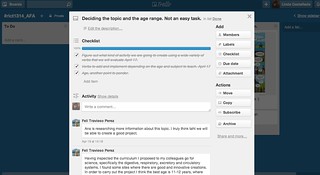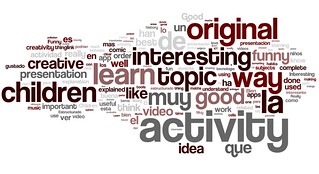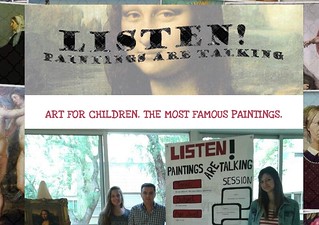https://www.lindacastaneda.com/mushware/rolesupdate2/Every year in the course Resources and ICT in Education for students in the bilingual English group of the Degree in Primary Education, I feel the responsibility to improve how we work on the course fundamental issues that affect the idea of ” Offer students information tools, learning strategies and cognitive mechanisms that allow them to start developing their teaching competence for the digital world and continue developing it autonomously or guided -according to their needs-, throughout their professional performance” (yes, desert sand in a bottle… hehehehe…), so, as a result of this desire to improve, I am introducing changes, and I share with you some of the tasks we do.
Therefore, this is the first in a series of “what we have done this year” posts for the 2023-2024 academic year, and no, in this first one, we are NOT going to talk about AI; we are going to talk about universal design.
I confess that although I always try to include “something” related to the importance of the “inclusive” perspective of technologies in my students’ assignments (thanks to the insistence and the always positive influence of my partner Javier Soto), the truth is that I have the impression that it was always a kind of “patch”, that I never ended up finding a way to make it “tangible”. I care a lot that the tasks I propose to my students are authentic, and that means that they allow them to put the competence they should develop (start to develop, to be more precise) in a way that is as realistic as possible but also trying to build bridges with other fields of knowledge of the profession, without getting too involved in the work of other courses and without neglecting my own work (that of my course, I mean).
Well, this year I came across an idea that I really liked to work with my students on the Universal Design for Learning (UDL) framework in the context of educational technology (no, I am not discussing whether UDL is or is not, research already has sufficient evidence of the effectiveness of UDL elements to improve teachers’ competence in inclusive classrooms, foster students’ abilities to value diversity and promote accessible lesson planning and delivery skills, and more).
I proposed that, in groups, they analyse in depth one of the tasks I had proposed to them during the course in light of the UDL proposals (strengths and problems) and also make suggestions (I asked them for at least three on three different aspects) on how I could improve the universality of my instructional design. The analysis was presented in the last class session in a speed-learning format (we start and finish the course with this dynamic to try to see how we have changed).
The result was very interesting. In general, you can notice many things in work done at the end of the term like this: You can notice that we know each other better (within groups, between groups, they know the teacher better, and they know what she expects from them), you can notice that they have been thinking about “the same” things for a while, and I also think that the task gives rise to very interesting analyses for them and for me.
In their presentations, they discussed technology, TPACK, tools, multimodality, digital competence, and accessibility. They also discussed pedagogical design and thinking from the student’s perspective. They tried (timidly) to criticize my teaching designs, and at the same time, they gave me ideas to enrich them.
Next time, I think I should focus the activity more on the search for technological or didactic alternatives to the problems they have encountered so I can focus more on the subject. But I like the task; I think it is appropriate to introduce it at this point of the course (at the end), which has a metacognition point by analysing the tasks proposed above.
Scheme used by the VELVET team in their speed-learning of task 10 https://lh6.googleusercontent.com/9OHcuRqtyMxq5GgtNuGMGmfgqU-WIGkiXOJmp9BXXYetqLK-xGhNs7GcHmuzzNJcJLAxahAg-XMBgIlcTG4lqqcRB78lq6-uKPV6oRZ3ldFPuGgPTkYq7N8dSKYxzCre=w1280
DISCLAIMER: To contextualize, I work with my students in a subject organised around weekly cooperative tasks every year I try to publish the instructions of the tasks I propose to my students (when the 23/24 ones are published, I will post them here), but I leave you some previous posts that can give more context if you feel like it:
Un catálogo de herramientas con clasificación ética y de privacidad



